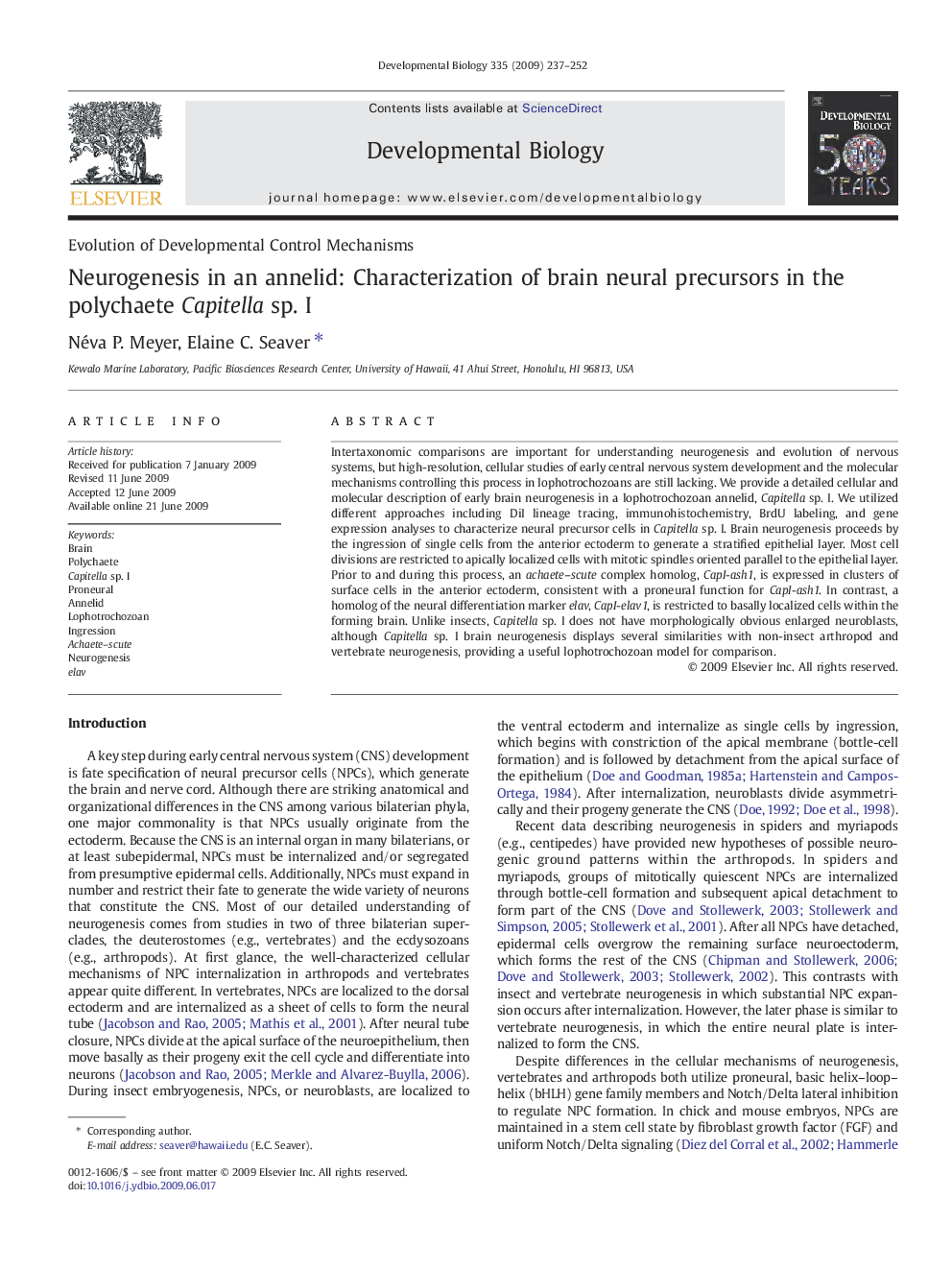| Article ID | Journal | Published Year | Pages | File Type |
|---|---|---|---|---|
| 2174032 | Developmental Biology | 2009 | 16 Pages |
Intertaxonomic comparisons are important for understanding neurogenesis and evolution of nervous systems, but high-resolution, cellular studies of early central nervous system development and the molecular mechanisms controlling this process in lophotrochozoans are still lacking. We provide a detailed cellular and molecular description of early brain neurogenesis in a lophotrochozoan annelid, Capitella sp. I. We utilized different approaches including DiI lineage tracing, immunohistochemistry, BrdU labeling, and gene expression analyses to characterize neural precursor cells in Capitella sp. I. Brain neurogenesis proceeds by the ingression of single cells from the anterior ectoderm to generate a stratified epithelial layer. Most cell divisions are restricted to apically localized cells with mitotic spindles oriented parallel to the epithelial layer. Prior to and during this process, an achaete–scute complex homolog, CapI-ash1, is expressed in clusters of surface cells in the anterior ectoderm, consistent with a proneural function for CapI-ash1. In contrast, a homolog of the neural differentiation marker elav, CapI-elav1, is restricted to basally localized cells within the forming brain. Unlike insects, Capitella sp. I does not have morphologically obvious enlarged neuroblasts, although Capitella sp. I brain neurogenesis displays several similarities with non-insect arthropod and vertebrate neurogenesis, providing a useful lophotrochozoan model for comparison.
